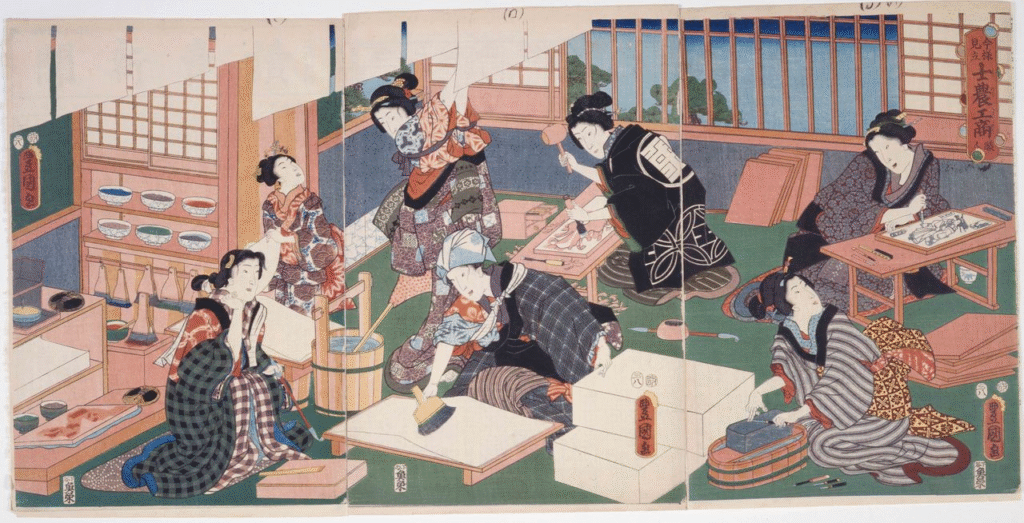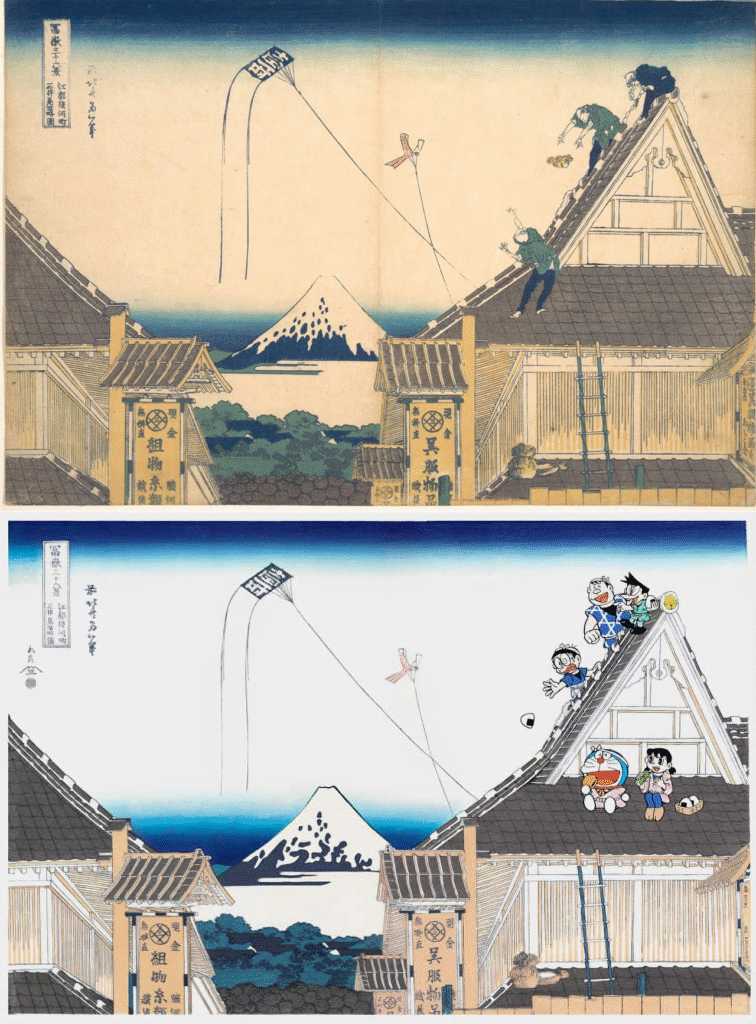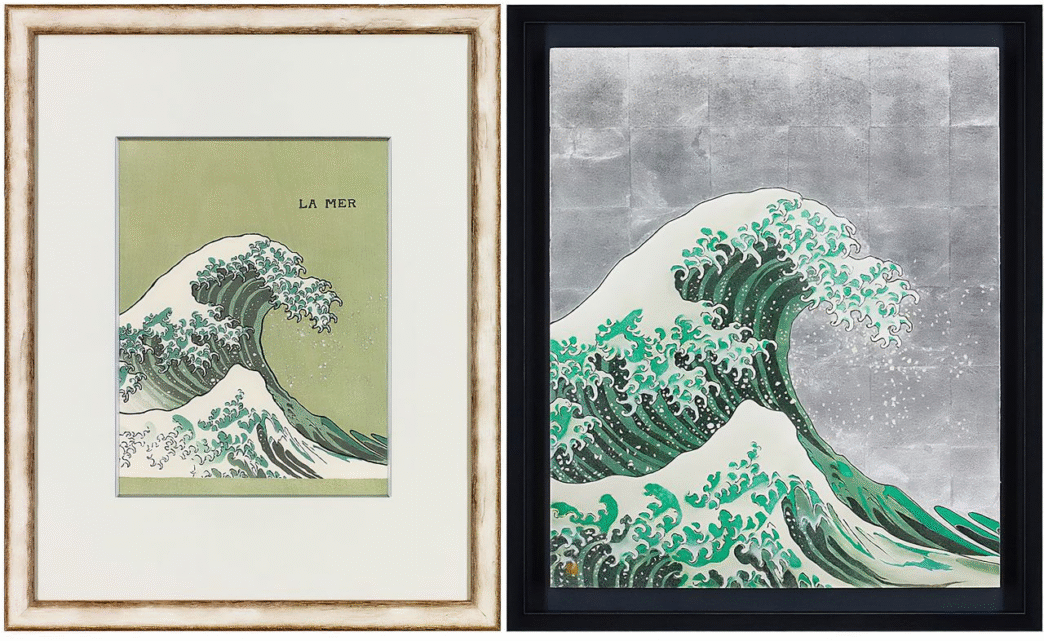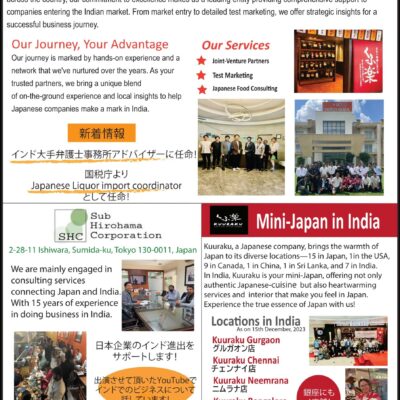Japan’s ukiyo-e, the vibrant woodblock prints of the Edo period (1603–1868), are experiencing a modern renaissance through a playful fusion with manga, anime, and global pop culture. Tokyo-based publisher Hanzō, led by Sakai Eiji, is breathing new life into this traditional art form by reimagining classics with characters like Doraemon, Godzilla, and even Star Wars’ Darth Vader. By blending Edo-era craftsmanship with contemporary icons, Hanzō is keeping ukiyo-e relevant while preserving its intricate techniques. But as these prints captivate new audiences, what does this fusion mean for the future of a centuries-old tradition?

Ukiyo-e, meaning “pictures of the floating world,” were the mass media of Edo, capturing everything from kabuki actors to scenic landscapes. Masters like Katsushika Hokusai and Utagawa Hiroshige crafted works that remain iconic, such as Hokusai’s Great Wave off Kanagawa. The creation process was collaborative, involving artists, carvers, printers, and publishers (hanmoto), who used cherry woodblocks and handmade Japanese paper to produce vivid, multi-layered prints. Today, however, only a few artisans continue this labor-intensive craft, with economic downturns since the 1990s forcing many to abandon the trade.
Enter Hanzō, a modern hanmoto determined to preserve ukiyo-e’s legacy. Sakai Eiji, who founded Hanzō two decades ago after leaving a trading company, saw potential in merging traditional techniques with pop culture. His team collaborates with skilled artisans to produce prints featuring Doraemon frolicking through Hokusai’s Thirty-Six Views of Mount Fuji or Crayon Shinchan dashing across Hiroshige’s Fifty-Three Stations of the Tōkaidō. These whimsical reinterpretations, crafted with authentic woodblock methods, have become collector’s items, often selling out quickly in Japan and abroad. Hanzō’s portfolio also includes Godzilla rampaging through neon-lit cityscapes and Fate/Grand Order characters like Altria Pendragon, showcasing ukiyo-e’s versatility.

The fusion isn’t without challenges. Securing rights to use copyrighted characters involves lengthy negotiations—Hanzō spent a year convincing Disney to allow Star Wars characters in ukiyo-e style, incorporating Japanese colors and traditional garb. The production process itself is costly and time-consuming, with high-quality materials like cherry wood and skilled labor limiting output to about five or six new prints annually. To broaden accessibility, Hanzō also produces high-resolution inkjet reproductions, balancing tradition with modern demands.
This marriage of old and new serves a dual purpose: preserving ukiyo-e’s techniques while engaging younger generations. Sakai, motivated by a desire to sustain the craft, hosts events like hands-on workshops at Tokyo’s Hotel Gracery, where artisans like Tetsui Hirokazu demonstrate woodblock printing to international visitors. These efforts highlight the artistry behind ukiyo-e, which Sakai sees as a precursor to manga and anime—both rooted in storytelling through vivid imagery. By featuring familiar characters, Hanzō bridges cultural gaps, drawing in fans who might not otherwise engage with traditional Japanese art.
The global appeal of these prints underscores ukiyo-e’s enduring relevance. Hanzō’s recreation of Hokusai’s Great Wave for the cover of Claude Debussy’s La Mer, coinciding with its feature on Japan’s ¥1,000 banknote, exemplifies how ukiyo-e resonates across cultures and eras. As Sakai continues to collaborate with entertainment giants and showcase artisans’ skills, he hopes to inspire a new generation to learn the craft before it fades. In a world of digital art, Hanzō’s ukiyo-e proves that tradition can stay in tune with modern life, blending Edo’s elegance with the energy of today’s pop culture.
FAQs
1. Why is Hanzō incorporating pop culture into ukiyo-e?
Hanzō aims to preserve ukiyo-e’s traditional techniques while appealing to younger audiences. By featuring characters like Doraemon and Godzilla, they make the art form accessible and relevant, encouraging interest in its craftsmanship.
2. How does Hanzō maintain the authenticity of ukiyo-e?
Hanzō uses traditional methods, including cherry woodblocks, handmade Japanese paper, and skilled artisans for carving and printing, ensuring each print adheres to Edo-era techniques despite modern themes.
Sources: Nippon.com (2025), Edo-Tokyo Museum Archives, Metropolitan Museum of Art









